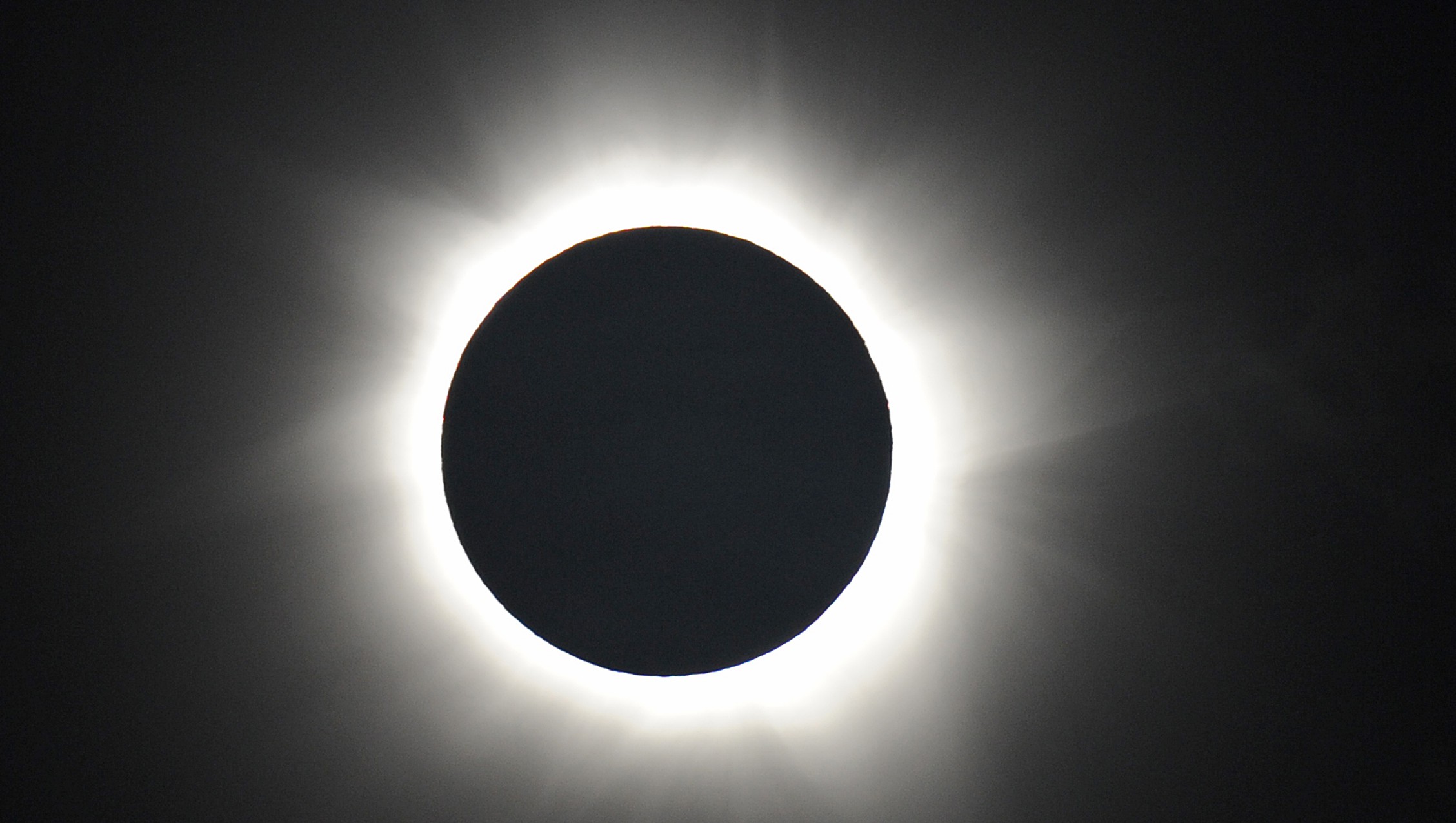
Totality is shown during the solar eclipse at Palm Cove in Australia’s Tropical North Queensland on November 14, 2012. (Getty)
With all the attention on tonight’s rare super blood moon lunar eclipse, you might be wondering when the next solar eclipse will occur.
A solar eclipse occurs when the moon passes between the Earth and the sun, blocking out all or a portion of the sun. The lunar eclipse occurring tonight is when the Earth passes between the moon and the sun, and the Earth’s shadow blocks out part or all of the moon (all of it will be blocked tonight because it is a total eclipse).
According to NASA, the next solar eclipse will occur on March 9, 2016. It will be visible in Asia and Australia. There will also be a solar eclipses on September 1, 2016 that will be visible from Africa and parts of the Indian Ocean. A solar eclipse on February 26, 2017 will be visible from South America, Africa and Antarctica.
The next solar eclipse that can be seen in the United States and North America will be on August 21, 2017, NASA says.
According to NASA, the solar eclipses in March will be a total eclipse, as will the August 2017 eclipse. The September 2016 and February 2017 eclipses will both be annular eclipses, which means a ring of sunlight will remain visible.
The last solar eclipse was on September 13, 2015, a partial eclipse that was visible in Africa and Antarctica.
Like the supermoon eclipse, the total eclipse on August 21, 2017, will also be a rare event for the United States. The last time a total eclipse of the sun was visible in the United States was in 1979. After 2017, it will not occur again until 2024, according to EarthSky.org.
You can watch tonight’s super moon lunar eclipse at the link below:
Read about the next solar eclipse in Spanish at AhoraMismo.com:


